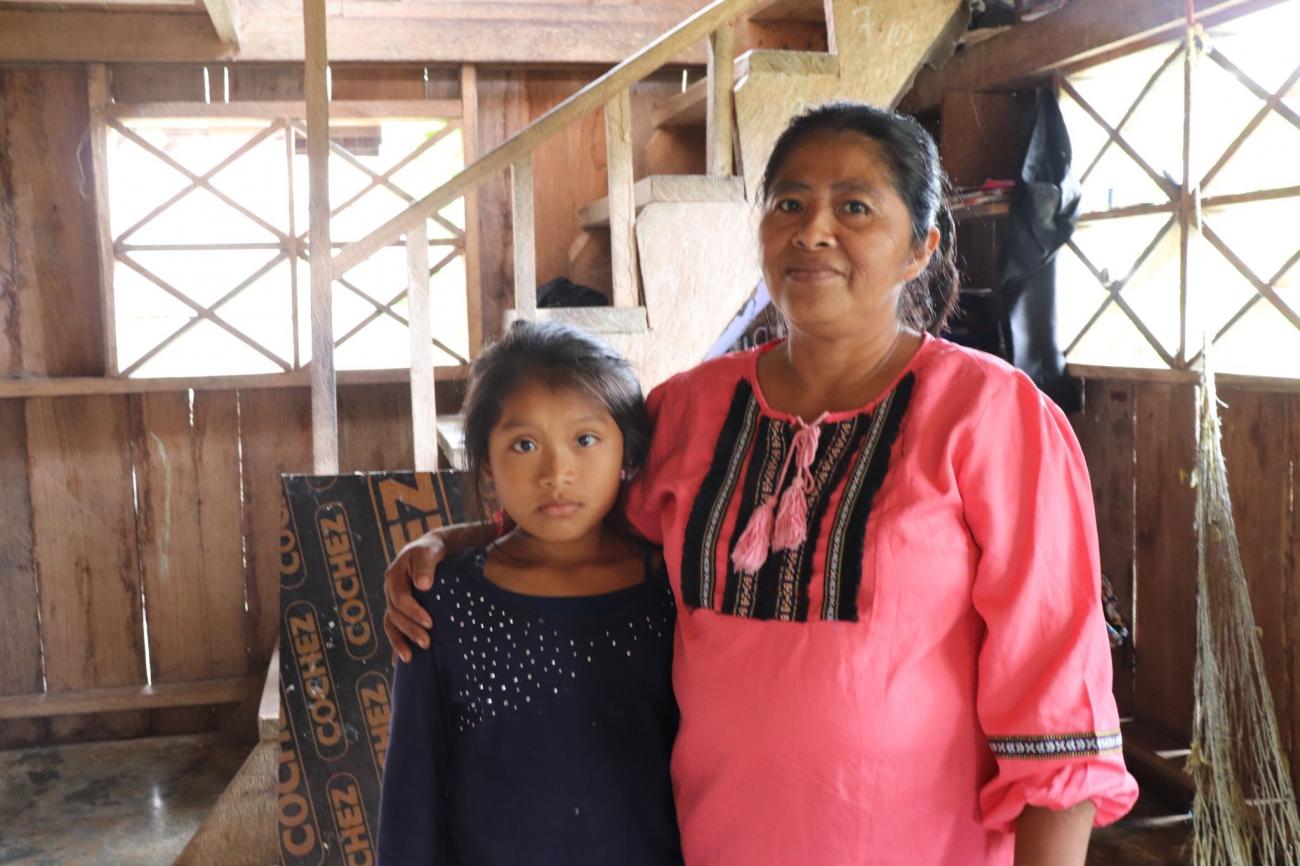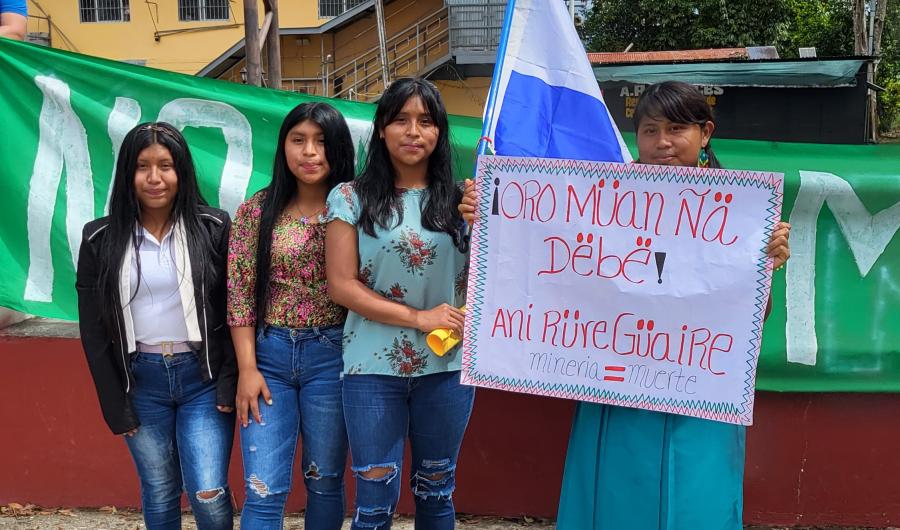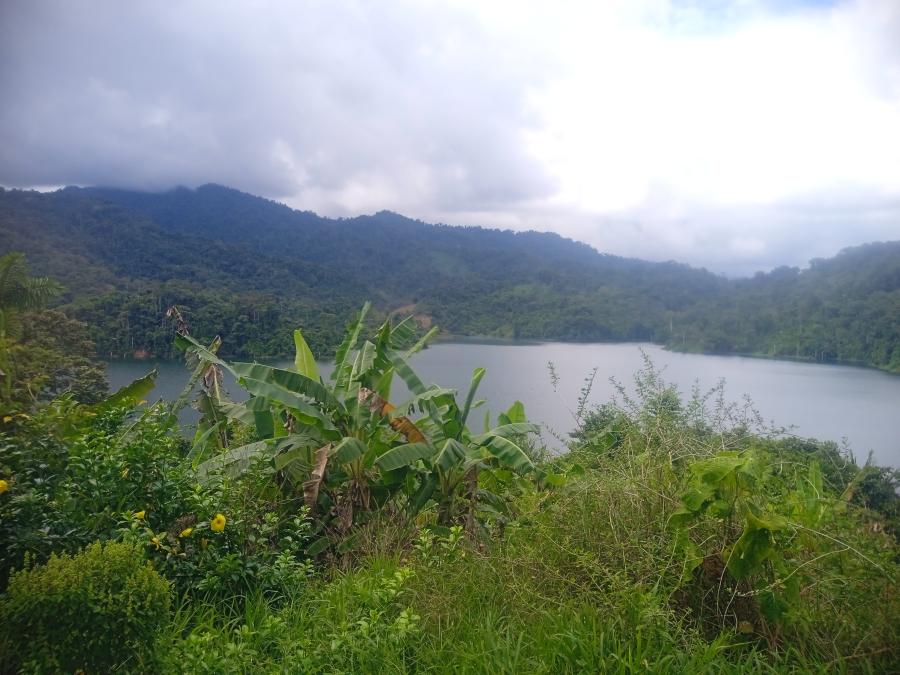
By Nati Garcia (Maya Mam/ CS Staff)
From David City, Panama, it takes four hours of travel in the jungle to reach the Ngäbe Bugle Comarca region in the province of Bocas del Toro. By foot is the common mode of transport for Ngäbe people as they trek for days into the jungle surrounded by harmonizing sounds of nature. COVID-19 startled Indigenous Peoples in the Comarca due to a lack of readily available information. However, this is not the first time the Ngäbe people have faced an invasive virus or illness. It is an unfortunate occurrence for many Indigenous Peoples who have withstood and overcame epidemics introduced by colonizers since first contact. Building resilience and immunity in situations of adversity have been an ongoing challenge. Indigenous Peoples have been navigating many layers of adverse conditions of colonization historically by overcoming epidemics and finding ways to harvest self-autonomy and boost immunity.
Photo by Jonathan Gonzalez Quiel.
In March 2020 Paublo Jimenez (Ngäbe) was one of the first 100 people in Panama to be infected with COVID-19 and the first in his community of Filo Verde, Comarca Ngäbe Bugle. Accurate information about the virus had not yet fully reached the Comarca Ngäbe Bugle region and many people were uneasy about or skeptical of the virus. However, for Jimenez, it was very real. He was sick for over 15 days in bed fighting the virus, as national news reported daily the stark numbers of deaths. Jimenez did not know what to think, he wondered if he would be one of the statistics as he continuously heard the media communicating alarming data and imagery of the impacts of the coronavirus.
Jimenez is a farmer, a father of nine children, and grew up most of his life in the jungle of the comarca. When the test came back positive for COVID-19, it was concerning, as little information was given to him about the virus. Everyone abandoned him due to worry and unfamiliarity with the virus. His wife, however, kept by his bedside attending to his health while caring for her family during this difficult time.
Being the first in his community to be infected but surviving paved the way for inspiration and hope for his community. As community members witnessed the progression of Jimenez’s recuperation, many sought out traditional medicine practices and immediately took preventative actions. Everyone knew that this would not be the first and only case.
As more community members became infected and experienced symptoms of COVID-19, medicine keepers were called upon to treat and provide healing remedies to soothe symptoms and provide spiritual guidance for mental wellness. The community took collective action in healing and strengthening their traditional medicine knowledge. Celestino, 54, born and raised in Filo Verde, in the Comarca Ngäbe Bugle region, in the province of Bocas del Toro, shared, “Those who got sick tried to help themselves organically with botanical medicine because the fear was to go to the hospital and return in a coffin.”

Celestino. Photo by Nati Garcia.
Celestino also recalled, “When the pandemic arrived, we knew we would have to face it; however we also knew that we are resilient and have been facing COVID armed with traditional knowledge. Using a diverse botanical approach helped us to keep the death rates low. At first, we heard people were dying and we too were a little scared. We became more careful. We no longer want to take the food given to us by the government because right now the government is in a political position and is not making community investments and social investments. I think that, for us, it has been good that food has been distributed to the sick, but only the sick qualify for it and not the healthy.”
In Panama, the government provided food packages for civilians impacted by COVID-19, to help sustain family health during this difficult time. Filo Verde was one of the Indigenous communities that received food packages, however, it was only for those who were infected. Many criticized the government for not supplying proper sanitary measures and that the food packages were seen as handouts versus providing adequate health care for Indigenous Peoples. Instead of receiving prevention equipment or installation of health centers in the Comarca so people do not have to trek for days to reach the nearest hospital, the government provided processed food products and body bags for Indigenous communities with the assumption that they would die. This assumption only sparked resistance by the Ngäbe community, for they have been far too familiar with having to fend for themselves.
“For us, a lot of people have to travel far to the hospital, they have to spend money. We, here in the region, are people with almost no resources. We look for traditional people who know about medicine so [..] we don't have to travel outside. If they are cured here and heal with the medicine, they save the little money they have. Grandparents received these healing teachings and later taught it to their children and thus the knowledge passed along so the tradition is not lost,” shares Julia Miranda, an Indigenous midwife of the Tuwai, Jirondaí community, from the Comarca Ngäbe Bugle region in the province of Bocas de Toro, where she led the construction of the first midwife center in her community. “There are people who do not have money to leave the community to give birth, so here they can give birth with a midwife by their side. I have six children and the midwife doctor is my mother. She gave me medicine for that so that I did not have complications with my body and childbirth,” Miranda comments.
Midwife Center. Photo by Jonathan Gonzalez Quiel.
Because the Panamanian government has not incorporated culturally appropriate practices, communication in Indigenous languages, acknowledgment of Indigenous health practices within the health care systems, many Indigenous Peoples have created their own health systems and have built supportive nets for Ngäbes who cannot afford to go the hospital, whether it be for financial purposes or for fear in being discriminated and not being attended too.
In Panama, before the pandemic, one and every five people were living in poverty and the Indigenous people experienced the highest levels of poverty at 98 percent. In the Comarca Ngäbe Bugle, there are many Indigenous communities isolated with limited or no access to health, education, communication, and adequate social services. Due to the lack of these basic services, many of the Ngäbes have had to rely on themselves to combat the virus, without government aid or support.
Miranda stresses the importance of community to support the well being of Indigenous people in combating COVID-19, “Here when a man got sick, I went to visit him, people told me I shouldn't go. I heard on the radio that you couldn't get close to people infected because you would get infected. So, when a very sick person arrived, I went to visit, I only felt that person had a fever. I encouraged him because I did not have to leave him alone. I think that many die there in the hospital because sometimes they are left alone, abandoned with no one to talk to. I would talk to him and share that you have to have faith and the man did not suffer much. It is a very difficult moment, I heard that another person who came here to sell corn died of COVID and the family left him alone in the house and there he died in three days. And I saw that man as a strong man, it could not believe what had happened. Only five people around here got very sick but survived.” The essential component of connection and community-based approaches in responding to COVID is critical for Indigenous Peoples.

Photo by Jonathan Gonzalez Quiel.
“In Panama, I think that we Indigenous people are very aware of [COVID] and we have been [..] resistant and at the same time faced the reality [we have used] everything that is botanical to be able to combat COVID because we have no information about the national medicine that the government is sending. We do not know what can happen when we use it,” says Celestino. As with the debates on vaccines, most people in the Comarca Ngäbe Bugle have sought natural remedies in treating and preventing the virus, as they do not trust the government. They have been consistent in attending to their health as they have done so for many generations with the use of traditional medicine.
“We have faced the pandemic like a war against that disease. There are some who do not know how to fight it and there are some who know because they are people who are connected to nature and know the natural medicine so they have remedies for the disease. Here, several people are knowledgeable about traditional medicine [..] and with that knowledge they fight the coronavirus disease,” says Julia Miranda.
Other ways that Indigenous Peoples have responded to the pandemic have been the translation of COVID-19 prevention materials into Indigenous languages. The Panamanian government has not systematically and consistently communicated in Indigenous languages. Many Indigenous organizations such as the National Coordinator of Indigenous Women of Panama (Conamuip) have developed dissemination campaigns with prevention and self-care messages against COVID-19 in Indigenous languages. These messages have reached a large audience of the Indigenous population in particular in rural areas of the Comarcas. Indigenous Peoples continue to take leadership in responding to COVID-19 and have been prime models in maximizing the importance of traditional knowledge to respond, recover, and re-imagine a more sustainable future for the well being of Indigenous communities.
Top photo: Julia Miranda and her daughter. Photo by Nati Garcia.


